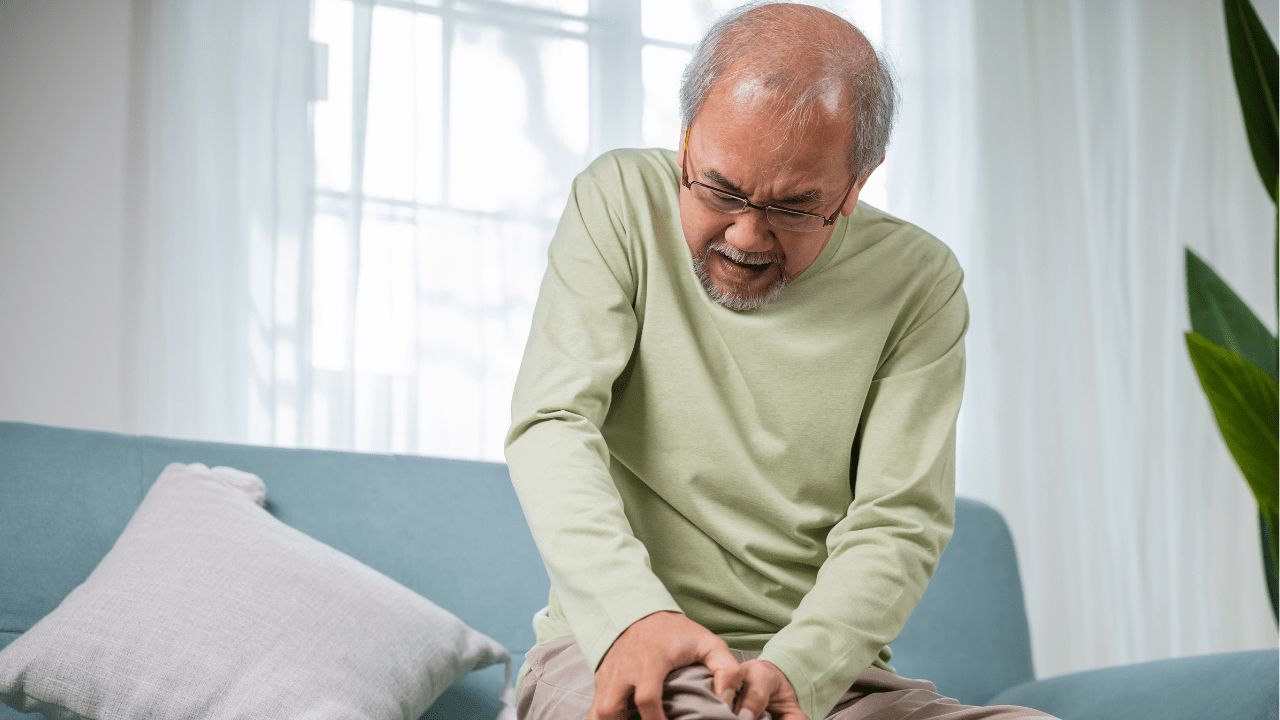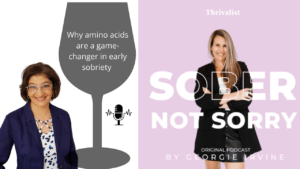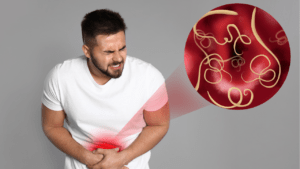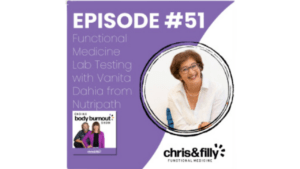Pain Pain Go Away
by Vanita Dahia
I couldn’t help giggling inside as I heard the conversations of pain and inflammations around the coffee table. “My knee aches, I can’t lift my arm cos’ of my shoulder injury, my knees hurt, I can’t walk due to hip injury or my headaches are debilitating”, a form of an organ recital.
In this “organ recital”, I became more conscious of the pain we suffer on a daily basis.
Persistent Pain Plagues our Population
In this blog, I will reveal some of the innovative new therapies that may help with alleviating pain.
Be it emotional or physical pain, pain is a rather unpleasant feeling which may be associated with actual or potential tissue damage. Despite causing suffering, pain is a critical component of the body\’s defence system. It is part of a rapid warning relay instructing the motor neurons of the central nervous system to minimise detected physical harm.
How many of us suffer with pain?
- One in five Australians are reported to be living with chronic pain
- 54% are women and 46% are men
- Those over 65 years of age are twice as likely to be living with chronic pain
- The prevalence of chronic pain amongst Australians is estimated to double by 2050
In 2016, pharmaceutical opioid use rather than illegal opioids accounted for 62% of all drug-induced deaths. The use of pain killers in the form of codeine or opioids have accounted for
- 14 emergency department presentations per day
- Nearly 150 hospitalisations occur daily in Australia due to opioid misuse, and involve opioid harm
The cure for pain is in the pain – Rumi
Dance with the pain
Pain causes suffering. Tara Brach has explained how we can dance with the pain. How we relate to pain is really how we hold onto the pain and unpleasant sensations or focus and attend to the pain. The more you resist pain, the greater the suffering.
Pain X Resistance = Suffering
A midwife would help a mother giving birth with pain by helping her breathe through the pain, dance with the pain to serve for freedom of pain as she brings a new baby into the world. We suffer with embracement in ageing and disconnect from nature by constantly seeking comfort. You might find warmth in relieving pain or use ice for an acute pain like a sports injury.
In those days the best painkiller was ice; it wasn’t addictive and it was particularly effective if you poured some whiskey over it – George Burns
Pain is a messenger and we constantly aiming at killing it. We feed the worry story, what are the pathways to worsen the pain, we obsess about fixing the pain, or blame someone or something for the pain. We become victims of the pain and subsequent suffering. There is no need to fixate on pain.
Pain zaps energy. The nutrients in the body are needed to ward off the pain, we tense against pain, pushing it away, become contracted and separate ourselves. We have an inherent wisdom within us to awaken and attend – allow the pain to become a portal or a messenger for a call to presence. Instead of a tight separate self, we must learn to acknowledge, accept, love and allow intelligently the pain to flow.
Pain is inevitable, but suffering is optional – Buddha
Instead of resisting, “Sit, Stay, Heal” – pause and feel the sensations, notice the texture, density, and intensity if pain. What is the attitude or judgement toward pain?
Instead of resisting, stay “sit, stay, Heal” pause and feel sensations, notice texture, density, what is the judgement/attitude. Forgive resistance, what is the constellation of sensations, be kind to pain.
No Brain No Pain
Pain is perceived in the brain. Sensation and perception of pain is all in the head. When in pain, you have central sensory sensitivity.
How can you de-escalate the pain? Is it opioids, drugs, CBD, pain therapy devices, herbal medicine, nutritional medicine or talk therapy?
Chronic pain is driven by multiple complex mechanisms resulting in a hyperinflammatory-nociception cascade, with chronic immune cell activity.
A farmer who had broken his bones through an injury incurred by his farming machinery ignored the pain and kept going. Dr’s were baffled as to how he managed to continue before he arrived at the surgery with significant pain, injury and fractures which under normal circumstances, would be excruciating and debilitating.
His focus was to get back to his horses on the farm as they needed him more than his injury. He recovered surprisingly and distracted his attention away from the pain. The pain was severe – but not as severe as tending to his horses.
Types of Pain
Pain can be classified as acute or chronic.
- Acute pain is short, sharp and short-term pain or pain with an easily identifiable cause. Acute pain is the body\’s warning of present damage to tissue or disease. This type of pain responds well to medications.
- Chronic pain usually lasts more than 3 months. This constant or intermittent pain has often outlived its purpose, as it does not help the body to prevent injury. It is often more difficult to treat than acute pain.
When a person complains of pain, what we\’re seeing is central sensory sensitivity
Putting your pain under the microscope, your mind picks apart all the different sensations you’re feeling, trying to identify the underlying cause to find a corresponding solution so that you can avoid further pain. As your mind searches for patterns or clues, it brings to mind memories of when you have felt similar pain in the past – in doing so, amplifying your pain in the present.
A Painful Predicament
The burden of living with chronic pain can extend well past the condition itself, having a flow on effect into other areas of your life: financial, relationships, social status.
Isolation amplifies pain
Loneliness is painful. A grandparent who ordinarily has heaps of aches and pain and immobility issues has the potential to ignore the ailments when tending or playing with their grandchildren.
Its important to identify the source of the pain. A simple stimulus may manifest as complex regional pain syndrome. 80% of sufferers cannot determine the cause of their headache or back pain.
Groups of pain
The experience of physiological pain can be grouped according to the source and related nociceptors (pain detecting neurons):
- Somatic pain originates from ligaments, tendons, bones, blood vessels, and is detected with somatic nociceptors. Pain receptors are scarce in some areas of the body which leads to dull, poorly-localised pain of longer duration
- Visceral pain originates from body\’s viscera, or organs. Visceral nociceptors are located within body organs and internal cavities. Visceral pain is extremely difficult to localise, and several injuries to visceral tissue exhibit \”referred\” pain, where the sensation is localised to an area completely unrelated to the site of injury.
- Neuropathic pain or neuralgia, can occur as a result of injury or disease to the nerve tissue itself. The sensory nerves disrupts transmission of the correct information to the thalamus, and the brain interprets painful stimuli even though there is no obvious or known physiologic cause for the pain.
On another note, primary pain which is really damage to the body is relaying unfiltered information from the body to the brain. Secondary pain on the other hand, is expression of the brain’s reaction to unfiltered information. This pain is controlled by an amplifier in brain that dials pain up or down.
Which conditions increase pain perception?
Pain is perceived in many health conditions like:
- Inflammation due to infection, autoimmunity, tissue damage
- Irreparable physical damage
- Low pain threshold
- Cancer
- Limb amputation
- Surgery
- Ageing
- Poor diet (especially protein deficient)
- Depression, mental health conditions
What dials pain up or down?
Variables that influence pain perception are:
Attention
Dial up pain by paying attention to it or distract and acknowledge pain to dial down pain perception
Psychological state
Depression, anxiety and stress deplete nutrients in the body required to manage pain. Emotional states can dial up pain.
Sleep deprivation
Sleep is restorative and repairs the body. Sleep is the best medicine for healing broken bones. The body is attempting to get the body to heal naturally.
Gender
Sex is considered the best pain reliever. However, women can tolerate pain better than men. More women complain of pain than men.
Social and culture norms
In some cultures, it is taboo for men to express pain. “Man up” is common to downgrade the focus on pain.
Measuring Pain
This danger detection system is called nociception. “Danger detectors” are spread through all tissues in the body, and when they identify something potentially harmful via sensory inputs, they send alerts up the spinal cord to the brain with the location and intensity of the threat. The brain evaluates all inputs – both external and internal – and decides whether you need protecting which usually triggers pain.
A dolorimeter is an instrument used to measure pain threshold and pain tolerance.
Lab tests that can identify inflammation associated with pain include:
- ESR, CRP, Homocysteine
- Omega Index
- Cytokines
Underlying causes of pain may be associated with:
- Metal toxicity
- Infections like Lyme disease, mould, or gastro-intestinal conditions
- Hormonal changes like endometriosis, PCOS
- Cardiovascular health, heart attack
A painful Pill to swallow
The use of pharmaceutical medicines and illegal drugs have grown exponentially. Aspirin was the gold standard in the old days. Today, the use of opiates has reached catastrophic levels. Pharmaceutical opioids were once reserved for treating pain that was short-term, terminal or related to cancer. All be it that they are necessary for pain management, they have the potential to be misused or abused.
Pharmaceutical medications may include:
- NSAID’s, and new generation anti-inflammatories
- salicylates
- Opiate analgesics reserved for palliative care but used more extensively
- Anaesthetics like Lidocaine or procaine
- Analgesics like paracetamol
- Anti-epileptics (e.g. pregabalin)
- Anti-depressants (e.g. selective serotonin reuptake inhibitors (SSRIs)
Natures Pain Relievers
White Willow bark
The most researched ingredient is salicin which is converted to salicylic acid by the liver and considered to have fewer side effects than aspirin. The mechanism of action of Salix alba is similar to that of aspirin, which is a nonselective inhibitor of COX-1 and COX-2, used to block inflammatory prostaglandins.
240mg standardised dose of the herb White Willow bark in 451 back pain sufferers resulted in 40 per cent of the patients being pain-free in just four weeks. (1)
Around 400 BC, Hippocrates recommended white willow bark be
chewed for relief of fever and pain
White Willow bark alone is a powerful analgesic, however combining it with Turmeric, Boswellia and Ginger provides an additive effect against pain.
Boswellia serrata, also known as frankincense, is an Ayurvedic Indian herb shown to inhibit pro-inflammatory processes by their effects on 5-LOX, COX and the complement system.
Clinical trials have also found that Boswellia serrata improves pain and functionality scores in osteoarthritis sufferers. Pain scores were reduced by 32% to 65%, and patients experienced a significant improvement within 7 days of treatment with either 100mg or 250mg of Boswellia serrata.(2)
Curcuma longa was the principle healing agent in Ayurvedic medicine, and was recognised as an important spice well before it became popular as a supplement. It is known to suppress nuclear factor-kappa B (NF-κB), reduce various activators of NF-κB and reduce the release of interleukins. In addition, it regulates the activity of several enzymes and cytokines by inhibiting both COX-1 and COX-2.
Ginger
One study involved 70 students suffering with premenstrual syndrome. Half received 250mg of Zingiber officinale twice daily while the rest received placebo. In the study, abdominal and back pain were reduced in the Zingiber officinale group. Women can also experience severe headaches during the luteal phase. Zingiber officinale was found to be effective in relieving headaches.
Magnesium
In one study magnesium was found to reduce the frequency of migraines by 41.6% versus just 15.8% in those given placebo. The magnesium citrate treatment reduced the tender points and intensity of fibromyalgia.(3)
Herbal Medicine
Herbs are classified into its mode of action either as anodyne, ant-inflammatory or spasmolytic.
Californian Poppy, corydalis, cramp bark, feverfew, greater galangal, Jamaican Dogwood, kudzu, Lions mane, rosehips, skullcap, valerian, willow, wood betony are amongst the huge array of herbs well researched and published as proven clinical support for pain management. Ideally, a health practitioner will blend a synergistic blend of herbs to manage pain effectively for your type of pain.
Corydalis is an effective analgesic phytomedicine against all types of paon – antinociceptive, anti-inflammatory and neuropathic pain. It has significant opioid receptor agonist activity and exerts its effects within the central nervous system, in part, by acting on monoaminergic neurotransmitters including dopamine, noradrenaline and serotonin. (4)
California poppy has been traditionally used to get a restful night’s sleep in Western herbal medicine. Non-habit forming, it is suggested that California poppy’s effect on nervous system function may be due to its ability to bind to GABA receptors and activate them.
Prunus cerasus (Sour Cherry) The decrease in plasma urate after cherry consumption supports the reputed anti-gout effects of cherries. study that included 633 participants showed that cherry intake over a two-day period was associated with a 35% lower risk of gout attacks compared with placebo. The risk of gout attacks tended to decrease with increasing cherry consumption, up to three servings over two days.(5)
Celery Seed
Apium graveolens (Celery Seed) Ayurvedic medicine has traditionally used Apium graveolens as a diuretic, and to improve appetite and digestion. It has also been used for the symptomatic relief of rheumatic conditions and gout.
Vitamin C
Taking 500-1500mg of vitamin C daily from the diet and/or supplements is associated with a 17% to 34% reduced risk of gout.
Alkalinise the body
Excess acid in the body from consuming too much meat, seafood and alcohol, or from impaired kidney function, can lead to gout— swelling in the joints around the smaller bones of the feet in particular, and the formation of uric acid crystals. All of this leads to episodic pain, more commonly known as gout attacks. Potassium exerts alkalising effects which serve to neutralise fixed acidity in urine.
The list of natural pain management is constantly growing. I have provided the most effective remedies in this blog.
Innovative advances in pain management
Specialised pro-resolving mediators (SPM’s)
SPMs are lipid mediators that occur naturally in the body and have been found in various human tissue (such as the brain, lymph nodes and synovial fluid). Pro-resolving factors resolve what\’s happening in the body and turning it off, as opposed to necessarily ending up taking too much of it and ramping something up. SPMs orchestrate resolution at the site of inflammation to assist tissue repair, healing, recovery and the return to homeostasis. These mediators help to:
- Activate the resolution phase.
- Signal to, and recruit certain immune cells and inflammatory mediators.
- Repair damage and clearance of pathogens.
- Prevent further pathological inflammation without immunosuppression.
Despite omega-3 EPA and DHA being precursors of SPMs, they do not possess significant pro-resolving properties.
Palmitoylethanolamide (PEA)
Pain and inflammation are mitigated by the endocannabinoid system (ECS) from the actions of endogenous cannabinoids, N-arachidonoylethanolamine (anandamide) and 2-arachidonylgylcerol (2-AG). PEA is a member of the family of bioactive lipids known at N-acylethanolamines (NAEs), which regulate the ECS. PEA was isolated and identified as the anti-inflammatory component in egg yolks in 1957.
PEA in the body can be synthesised from anandamide, which is one of our endocannabinoids. Giving exogenous PEA can increase anandamide\’s activity and also its affinity for its receptor sites as well. So, in that indirect way, giving exogenous PEA can actually increase the use of anandamide in the body. these are pro-resolving or pro-homeostatic compounds. OEA, we see a lot of it in the intestinal mucosa and, PEA, more so systemically and also in the central nervous system.
Oleoylethanolamide (OEA) is natural fatty acid amide cousin of PEA.
There might be an entourage effect with PEA and OEA involving the TRPV1 receptor, often called the “capsaicin receptor” because it is the receptor that\’s involved in your sensation of having chilli, or capsaicin. Receptors are tiny proteins attached to your cells. They receive signals, mostly chemical ones, from different stimuli and help your cells respond.
This represents the role of heat and pain, which is how we describe pain and inflammation.
PEA works by desensitising TRPV1 which means that you\’re less sensitive to the sensation of heat and pain. PEA reverses the over-activation seen in highly inflammatory conditions or nerve pain conditions.
One of its main roles is that PEA inhibits mast cell migration, degranulation, and overactivation, and this includes astrocytes and glial cells in the brain. The glial cell or mast cells will actually release histamine in order to tell the body, \”I want inflammation here and I want it now.\” At the same time, it also releases PEA for the negative feedback in order to turn down the inflammatory response once it’s started.(6)
Melatonin and GABA
There is a separate analgesic effect of melatonin on the melatonin receptors in the areas of the brain responsible for pain perception and control and on several neurotransmitter systems (GABA, opioid system, l-arginine, nitrous oxide pathway, etc.). It is noteworthy that melatonin has a very high safety profile. Melatonin plus or minus gabapentin just prior to lower back surgery, reduces the need for pain relief after surgery with vastly different pain scores.(7)
Oxytocin is being used more and more. How is it that oxytocin turns off pain? It\’s a nasal spray of oxytocin used for pain relief. Due to its analgesic, anxiolytic, antidepressant and other central nervous system effects, there is strong evidence that oxytocin and other drugs acting through the oxytocin receptor could act as multifunctional analgesics with unique therapeutic value.(8)
Low dose Naltrexone
Naltrexone is used to treat opioid and alcohol addiction by blocking the opioid receptors so drugs like heroin cannot take effect. Naltrexone is used to break addictions to alcohol, to break the cycle of opioids, to effectively block the receptors of the opiate receptors around the body in order to stop the drugs that people are taking, often illicit drugs or prescription drugs.
However, given at much smaller doses, naltrexone blocks the opioid receptors only slightly. This creates a stimulating, re-regulating effect and pain relief.
Everyone has a cell-signalling system known as the endocannabinoid system (ECS).
Cannabidiol (CBD) is a type of cannabinoid, a chemical found naturally in cannabis (marijuana and hemp) plants. CBD doesn’t cause the “high” feeling often associated with cannabis. That feeling is caused by tetrahydrocannabinol (THC), a different type of cannabinoid. CBD oil is especially promising due to its lack of intoxicating effects and a possible lower potential for side effects than many other pain medications.
Some researchers think that CBD interacts with a core component of the ECS — endocannabinoid receptors in your brain and immune system.
Nitric oxide (NO)
NO has been shown to be a key player in many normal and pathological events in the brain. Nitric oxide (NO) is a versatile messenger molecule first associated with endothelial relaxing effects.
NO is implicated in the regulation of COX82 activity and activates COX, followed by an increase in prostaglandin synthesis. It gives an anti-inflammatory effect under normal physiological conditions. On the other hand, NO is considered as a pro-inflammatory mediator that induces inflammation due to over production in abnormal situations.(9, 10)
Ketamine
High doses of ketamine can temporarily switch off the brain
If it disrupts the networks between different regions of the brain, this could make it a useful tool to study how brain networks function – both in the healthy brain and in neurological diseases like Huntington\’s disease and schizophrenia.\” (11)
Ketamine is a drug with sedative (sleep-producing), analgesic (pain-relieving), and amnesic (short-term memory loss) effects. It combats pain by acting against a specific chemical receptor known as N-methyl-D-aspartate, or NMDA, which is found in the nervous system and, in part, modulates pain.
Amino Acids for pain management
Amino acids are precursors to neurotransmitters which are the primary neurohormones involved with the endocannabinoid system to perceive pain.
| Amino acid | Neurotransmitter | Action |
| Choline | Acetylcholine | Decreases pain perception, inhibits pain |
| Histidine | Histamine | Inhibits inflammation |
| Tryptophan | Serotonin | Inhibits inflammation |
| Serine | D-Serine | Increase sensitivity to opioids |
| Arginine | Nitric oxide | Produces natural opioids |
| GABA | GABA | modulate nociception and inflammation |
| Theanine | GABA | modulate nociception and inflammation |
| Glycine | GABA | modulate nociception and inflammation |
Theramine, a prescription-only amino acid food product, may offer a safe alternative to traditional pharmaceutical products used to treat chronic back pain, according to a presentation at PAINWeek 2012. Theramine is prescribed for patients with chronic pain, fibromyalgia, neuropathic pain, and inflammatory pain who cannot use conventional diets or supplements. It had been shown in a previous double-blind clinical trial to be effective in the treatment of chronic low back pain when compared with naproxen, a nonsteroidal anti-inflammatory drug (NSAID).(12)
Pain Management from the Kitchen
Whilst they are a huge smorgasbord of home remedies for pain based on age old traditions, there are a few recipes I have found to be really beneficial that can be made in your kitchen. It’s fun and healthy!
Get your Pain relied Recipes now!
Devices to Manage Pain
There are heaps of devices, machines and techniques that have shown great relief of pain. Here are just a few notable options available on the market:
- Photobiomodulation (PBM) or Low Level Laser Therapy (LLLT), or cold laser therapy, also known as laser light therapy. Low Level Laser Therapy (Laser Light Therapy) uses light energy to stimulate cells, musculoskeletal low-intensity laser, helping them to function optimally, which in turn encourages the healing process
- Implantable neuromodulation device currently marketed for adults with chronic pain of peripheral nerve origin
- External Pulse Transmitter “patch” is worn on the skin over the implant, powering it and sending the stimulation signal to the implant
- Transcutaneous electrical nerve stimulation (TENS) therapy use low-voltage electric currents to treat pain
- Opioid-sparing elastomeric ambulatory infusion pump automatically and continuously delivers a regulated flow of local anaesthetic to a surgical site or in close proximity to nerves, providing targeted pain relief
- Cooled Radiofrequency (RF) is a thermal RF system that uses water-cooled technology (hence the name) to deactivate pain-causing sensory nerves. It works via a RF generator that transmits a small current of energy through an insulated electrode placed within tissue
- Radiofrequency Ablation (RFA) targets the nerves that send pain signals to your brain. Your doctor will use a needle with a tip that heats up. The needle is placed very close to the nerve. The heat zaps it so that it can’t send the pain signal.
- Nerve root blocks target the nerves along the spine that lead to pain in other areas, such as the arms or legs.
- Epidural steroid injections can help with disc problems, like herniated discs. The shots go in the outer part of your spinal column.
- Bioelectronic medicine device (SetPoint’s miniature)is implanted on the left vagus nerve via a small incision in the neck. It delivers electrical impulses designed to activate the innate inflammatory reflex to produce a systemic anti-inflammatory effect, and to help restore balance and regulate the immune system
- Spinal Flow Technique facilitates a full rewiring of the brain, and the body relearns what it already knew, to begin with—how to self-heal where every cell of the body feels connected and free
- Cell-signaling anti-inflammatory protein – In the new study, Prof. Dr. Halina Machelska from Charité Universitätsmedizin in Berlin, Germany, and her team investigated how a cell-signaling anti-inflammatory protein called interleukin-4 (IL-4) encourages macrophages to produce pain-relieving opioid peptides at the site of inflammation. (13)
- Emotional Freedom Technique uses tapping method with NLP-type practices to relieve pain
Could furry robots relieve pain and help bolster mood?
- Virtual reality (VR) – Sixty one people were given a VR headset — the Samsung Gear Oculus headset used to expose recipient with access to 21 different immersive experiences, such as a simulated helicopter tour over rugged Iceland or a guided relaxation while looking at soothing ocean or mountain scenery.(14)
- Could furry social robots help bolster moods and reduce pain when human to human contact isn\’t an option, for example, during a pandemic?
Human-human social touch improves mood and alleviates pain. No studies have so far tested the effect of human-robot (PARO) emotional touch on experimentally induced pain ratings, on mood and on oxytocin levels in healthy young adults.(15)
Interacting with the baby-seal PARO robot induced an increase in perceived happiness, a decrease in oxytocin levels and a reduction in pain ratings to both mild and strong heat stimuli. The reduction in pain ratings was greater when touching the robot in contrast to being in the mere presence of it. The reduction in pain ratings was correlated with the participants’ positive perceptions of the interaction with PARO, and with oxytocin levels.(16)
Practices To Press Pause On Pain
- Cold and heat application
- Diffuse or apply essential oils
- Acupuncture
- Yoga and Tai Chi
- Mindfulness meditation and deep breathing exercises
- Physical therapy
- Talk therapy
- Spend time in nature
- Physical exercise (as approved by your health care practitioner)
- Music
- Massage
- Quality sleep
Educational Webinar
In this webinar, you will learn:
- Types of pain
- Measuring pain
- Devices used for pain management
- Pharmaceutical and natural pain management therapies
Pain Pain Go Away eBook
In conclusion
I routinely use the following natural protocol for pain.
I employ the best natural pain management options for different types of pain. Some of the herbs or amino acids used are:
- Herbal compounded mixture containing some of the following herbs dependant on type of pain.
- Corydalis, Californian Poppy, Jamaican Dogwood, cramp Bark, Feverfew, Valerian, Wood Betany, Greater galangal, skullcap, Boswellia, curcumin, ginger
- Magnesium oral and topical
- Compounded Amino Acid pain formula individually compounded containing:
- PEA, magnesium citrate, DL-phenylalanine, theanine, Choline, Histidine, Tryptophan, Serine, Arginine, GABA, Theanine, Glycine
References
- Chrubasik S, Eisenberg E, Balan E, Weinberger T, Luzzati R, Conradt C. Treatment of low back pain exacerbations with willow bark extract: a randomized double-blind study. Am J Med. 2000;109(1):9-14.
- Prabhavathi K, Chandra US, Soanker R, Rani PU. A randomized, double blind, placebo controlled, cross over study to evaluate the analgesic activity of Boswellia serrata in healthy volunteers using mechanical pain model. Indian J Pharmacol. 2014;46(5):475-479. doi:10.4103/0253-7613.140570
- Yablon LA, Mauskop A. Magnesium in headache. In: Vink R, Nechifor M, editors. Magnesium in the Central Nervous System [Internet]. Adelaide (AU): University of Adelaide Press; 2011. Available from: https://www.ncbi.nlm.nih.gov/books/NBK507271/
- Wang L, Zhang Y, Wang Z, et al. The Antinociceptive Properties of the Corydalis yanhusuo Extract. PLoS One. 2016;11(9):e0162875. Published 2016 Sep 13. doi:10.1371/journal.pone.0162875
- Kelley DS, Adkins Y, Laugero KD. A Review of the Health Benefits of Cherries. Nutrients. 2018;10(3):368. Published 2018 Mar 17. doi:10.3390/nu10030368
- Alhouayek M, Muccioli GG. Harnessing the anti-inflammatory potential of palmitoylethanolamide. Drug Discov Today. 2014 Oct;19(10):1632-9. doi: 10.1016/j.drudis.2014.06.007.
- Danilov A, Kurganova J. Melatonin in Chronic Pain Syndromes. Pain Ther. 2016;5(1):1-17. doi:10.1007/s40122-016-0049-y
- Goodin BR, Ness TJ, Robbins MT. Oxytocin – a multifunctional analgesic for chronic deep tissue pain. Curr Pharm Des. 2015;21(7):906-913. doi:10.2174/1381612820666141027111843
- Priscilla M. Nodine, Michelle R. Collins, Cristina L. Wood, Jessica L. Anderson, Barbara S. Orlando, Bryan K. McNair, David C. Mayer, Deborah J. Stein. Nitrous Oxide Use During Labor:
- Freire MA, Guimarães JS, Leal WG, Pereira A. Pain modulation by nitric oxide in the spinal cord. Front Neurosci. 2009;3(2):175-181. Published 2009 Sep 15. doi:10.3389/neuro.01.024.2009
- https://www.sciencedaily.com/releases/2020/06/200611094127.htm
- https://www.empr.com/home/mpr-first-report/painweek-2012/painweek-2012-chronic-pain/theramine-a-safe-pharmacologic-alternative-for-chronic-back-pain
- https://www.medicalnewstoday.com/articles/a-promising-new-mechanism-for-long-lasting-pain-relief
- Li A, Montaño Z, Chen VJ, Gold JI. Virtual reality and pain management: current trends and future directions. Pain Manag. 2011;1(2):147-157. doi:10.2217/pmt.10.15
- https://doi.org/10.1038/s41598-020-66982-y
- Nirit Geva, Florina Uzefovsky, Shelly Levy-Tzedek. Touching the social robot PARO reduces pain perception and salivary oxytocin levels. Scientific Reports, 2020; 10 (1) DOI: 10.1038/s41598-020-66982-y






